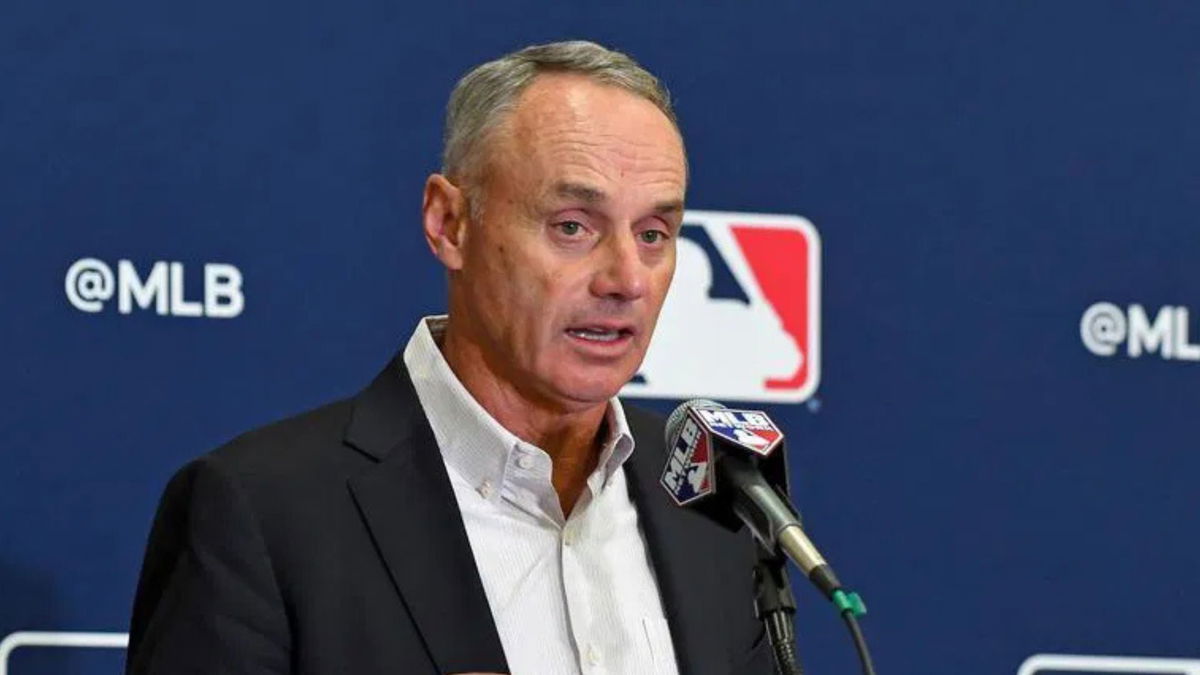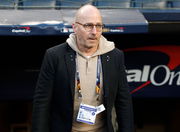
Imago
Image: IMAGO

Imago
Image: IMAGO
There was a bold public pledge from then-Baltimore Orioles owner John Angelos in early 2023. Confronted with questions about his team’s low payroll, he declared that he would open the books to show that the financial constraints were real. The deadline came and went in silence, but the real punch line came a year later when Angelos didn’t even open the books but sold the team for a staggering $1.7 billion. This incident is, reportedly, part of a larger, more troubling story circulating through the league.
Watch What’s Trending Now!
According to renowned journalist Molly Knight, MLB owners now have a convenient excuse for low spending. In a recent social media post, she wrote, “A lot of MLB teams are whispering to reporters that they took on huge debt during Covid, and that’s why they’re not spending. They are free to open their books to prove how broke they are, but they won’t. We’ve asked. The last Orioles owner promised to open his books, then sold the team instead lol.”
To be fair, the COVID-19 pandemic did land a gut punch to Major League Baseball. Commissioner Rob Manfred revealed that the league suffered estimated operational losses between $2.8 billion and $3 billion during the curtailed 2020 season alone, which was slashed from the traditional 162 games to just 60. This significant shortfall was primarily driven by the lack of in-stadium revenue, including ticket sales, concessions, parking, and merchandise, which collectively account for a substantial portion of teams’ income.
ADVERTISEMENT

Getty
NEW YORK, NY – NOVEMBER 22: Major League Baseball Executive Vice President Rob Manfred speaks at a news conference at MLB headquarters on November 22, 2011 in New York City. Commissioner Bud Selig announced a new five-year labor agreement between Major League Baseball and the Major League Baseball Players Association. (Photo by Patrick McDermott/Getty Images)
Fox Business reported that MLB teams collectively accumulated $8.3 billion in debt during this period, highlighting the immense financial strain. An analysis by Wegryn Enterprises estimated that the Los Angeles Dodgers alone lost over $183 million in revenue in 2020, followed closely by the Chicago Cubs (over $179 million) and the Boston Red Sox (over $175 million).
Beyond the immediate loss of revenue from fan attendance, the pandemic also affected broader financial aspects of the league. Free-agent contract compensation, for example, saw a significant decline of as much as 20% during the pandemic years, as analysed by World Scientific Publishing using a sample of 643 free-agent signings.
ADVERTISEMENT
Yet that financial winter was brief. The league’s recovery wasn’t simply a rebound; it was an explosion. MLB’s revenue reached approximately $9.6 billion in 2021, recovering to about 92% of its pre-COVID 2019 level of $10.4 billion, per Tifosy Capital & Advisory.
This upward trajectory continued in the following years as well, with the league hitting a new record revenue of $11.6 billion in 2023, per Sports Business Journal. It further increased to a reported $12.1 billion for the 2024 fiscal year.
ADVERTISEMENT
The total attendance for the 2023 season reached over 70.7 million, marking a 9.6% increase from 2022. For the first time since 2017, the attendance surpassed the 70 million mark, with 26 out of 30 clubs registering attendance gains, per MLB.com. Now, with this recovery, the lack of spending by certain teams is hard to figure out.
Per the Associated Press, the New York Mets ($333 million) topped the payroll charts in 2024, followed by the New York Yankees ($310.9 million), Los Angeles Dodgers ($270.8 million), and Philadelphia Phillies ($249.1 million). While in stark contrast to that, the Oakland Athletics and Pittsburgh Pirates occupied the bottom two spots at $66.5 million and $87.3 million, respectively.
So, is less spending more of a choice?
ADVERTISEMENT
Molly Knight is unhappy with certain team owners
Molly Knight’s frustration is about where fan anger is cast. Their ire, she thinks, should be aimed at the owners who don’t spend, not at those who do. In another post, she wrote: “Rich teams already pay a sh-t ton in revenue sharing to teams like the Pirates, Marlins, etc., whose owners pocket the money instead of spending it on players because capitalism. Then they gaslight their fans into being mad at owners willing to spend or players for being greedy. Come on, guys.”
Referencing the infamous tenure of the former Dodgers owner, Frank McCourt, Molly further wrote, “The Dodgers used to be owned by people who looted and bankrupt the team before they were bought by owners who spend money on player development, free agents, scouting, nutrition, etc., and *shocker* started winning. I wrote a whole a-s book about it. Please do not mansplain baseball economics to me.”
ADVERTISEMENT
Well, MLB teams are protected by the league’s amazing economic safety net. Under the 2022 Collective Bargaining Agreement, teams benefit from two major revenue streams before any ticket sales: an estimated $110 million comes from a shared pool of 48% of all local revenues, distributed equally among the 30 teams. Additionally, each team receives approximately $90 million from national revenue as well, per The Tribune.
Top Stories
Mark Shapiro Rubs Salt in Yankees’ Wounds as He Issues Stark Ultimatum to Blue Jays Clubhouse

Kyle Tucker Blue Jays Speculation Deepens as Two Key Stars Drop Cryptic Hints

Red Sox–Cubs Hit Major Offseason Roadblock as Mariners GM Pushes for $66M Reunion

Yankees & Brian Cashman Handed Clear Ultimatum on ‘Second Yoshinobu Yamamoto’ As Cubs Pressure Intensifies

Mets World Series Champion Turns On David Stearns After Team Snubs Pete Alonso in Major Offseason Misstep

So, for teams like the Pittsburgh Pirates or Oakland A’s to collect that nine-figure sum and then spend less than half of it on player payroll isn’t a sign of struggle. It’s more of a choice.
Owners have long tried to introduce a salary cap — something the MLBPA identifies as a tool to suppress players’ earning potential. Tony Clark, the MLBPA executive director, even called it institutionalized collusion.
ADVERTISEMENT
Nevertheless, what’s your take on the idea of a salary cap?
ADVERTISEMENT
ADVERTISEMENT
ADVERTISEMENT

